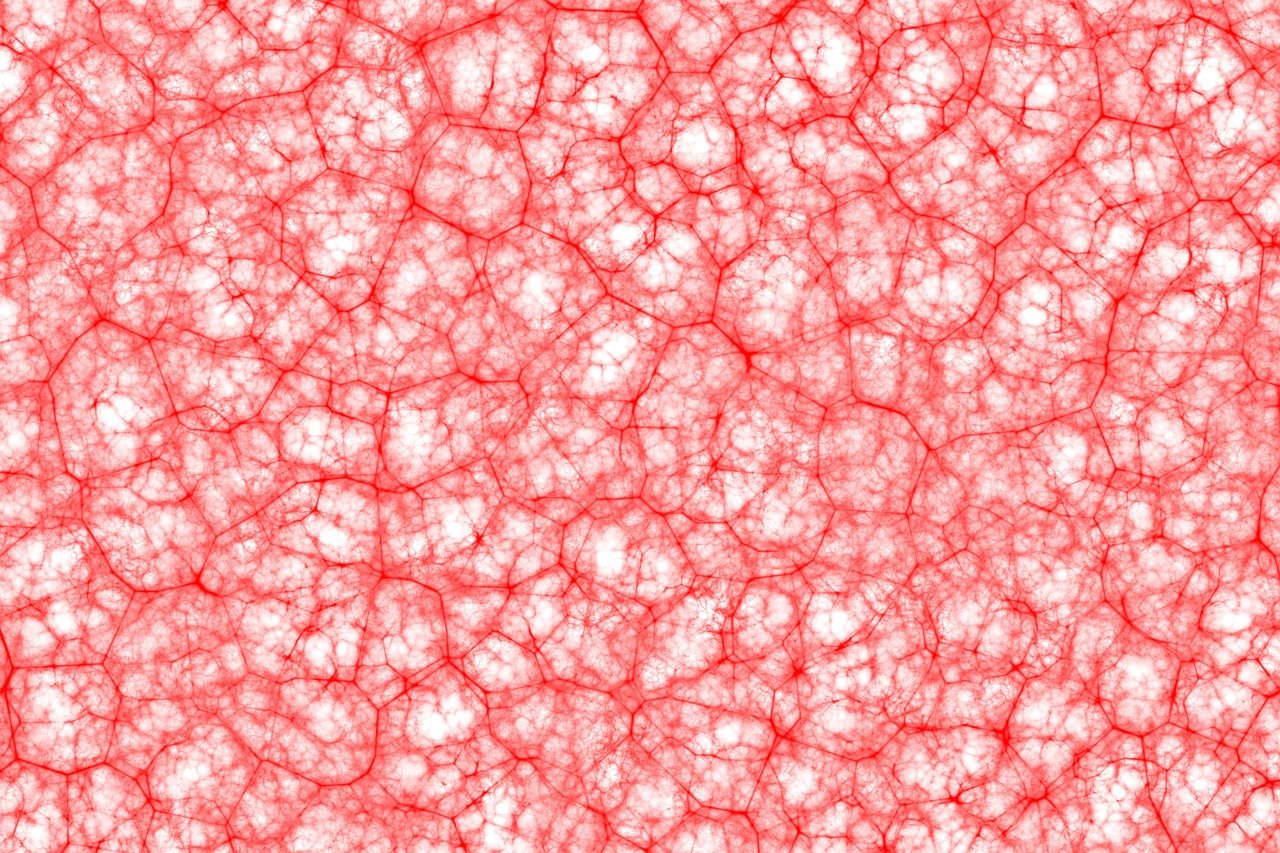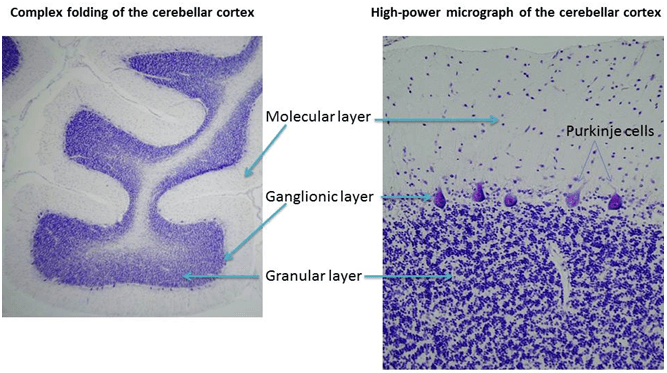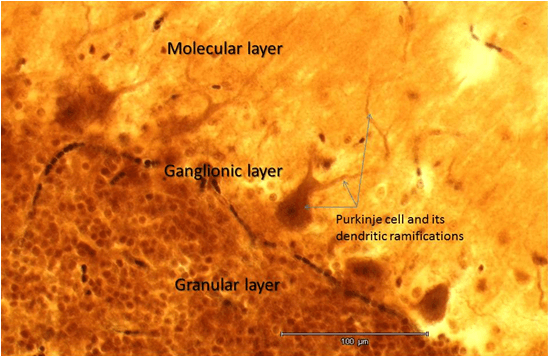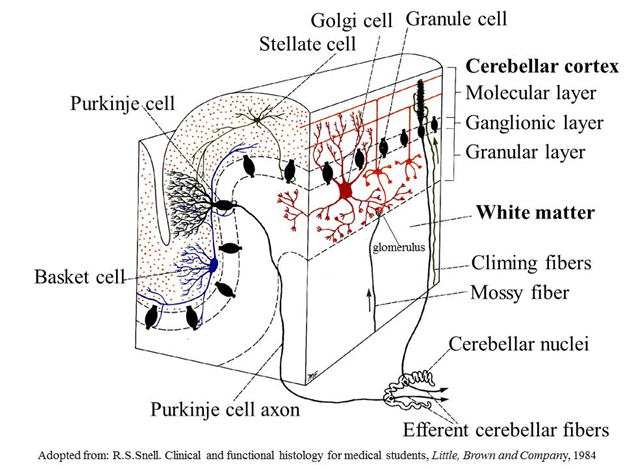
Morphology of Nervous System
The cerebellum
The cerebellum coordinates muscular activity, maintains posture and equilibrium. The cerebellar cortex forms a series of deeply convoluted folds or folia supported by branching central medulla of white matter.

Cortex consist of three distinct layers:
- molecular layer – contains two main types of neurons: stellate cells and basket cells, which are scattered among dendritic ramifications and numerous thin axons that run parallel to the long axis of the folia.
- ganglionic layer or Purkinje cell layer – the layer is formed of a single row of large Purkinje cells. In routine micrographs only pear-shaped cell bodies are seen, the vast pattern of branching of dendrites in the molecular layer can be made visible only by special staining methods. The axons of Purkinje cells provide the only efferent pathway to the deep cerebellar nuclei, and thus Purkinje cells constitute the sole output of all motor coordination in the cerebellar cortex.

- granular layer – the layer is densely populated by small granule cells with dark-staining nuclei and scanty cytoplasm. Each cell emits four to five dendrites, which make synaptic contact with the afferent mossy fibers. The axons of granule cells rise vertically into the molecular layer, where they bifurgate at a T junction, the branches run parallel to the long axis of the cerebellar folium and synapse with dendrites of the Purkinje cells. Scattered throughout the granule cells are Golgi cells, their dendrites ramify in the molecular layer and their axons synapse with the dendrites of the granule cells.
Input pathway to the cerebellar cortex include mossy fibers and climing fibers. Mossy fibers enter the granular layer and form synapses with the granule cells. The contacts between mossy fibers and granule cell dendrites take place within structures called glomeruli. Terminals from Golgi cells also infiltrate these structures. Climing fibers reach the molecular layer, where one fiber “climbs” the dendrites of the Purkinje cell, winding around them.



